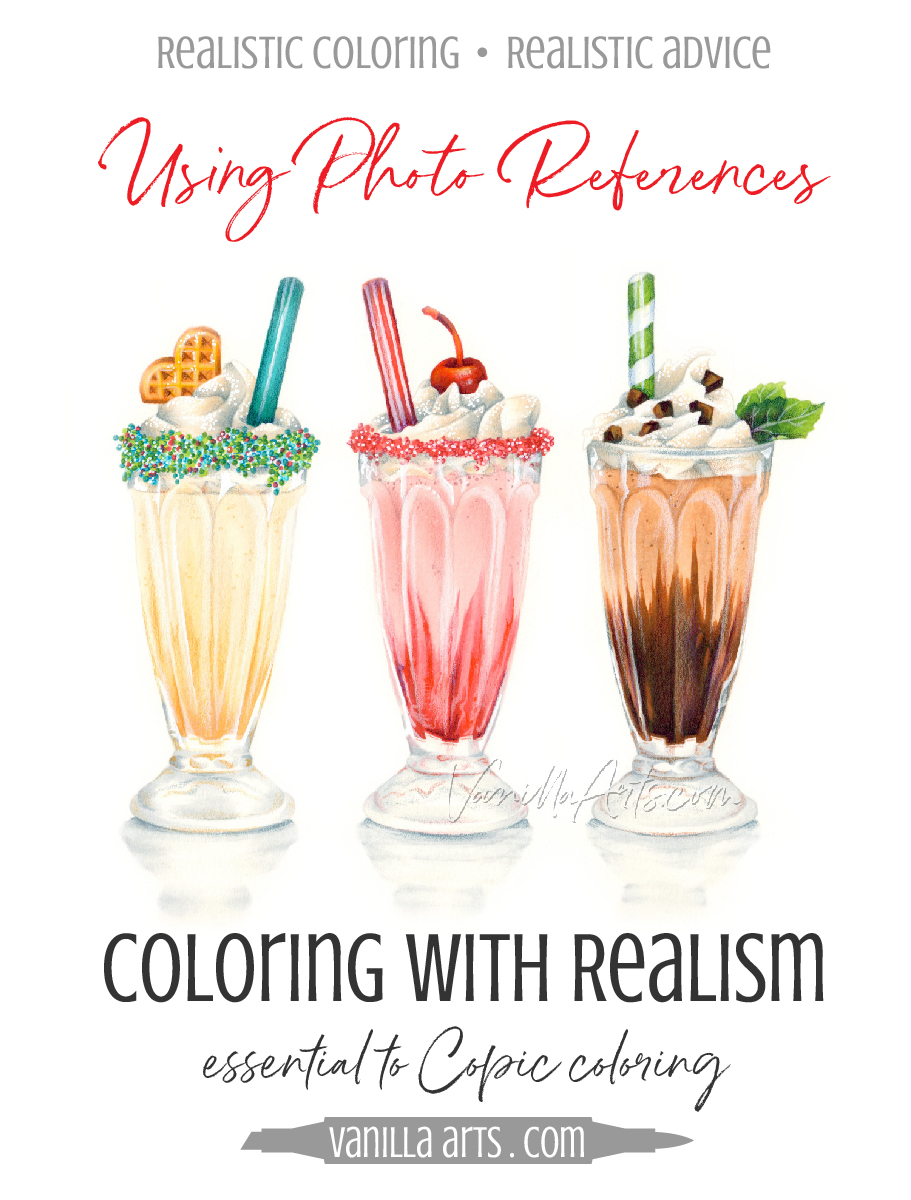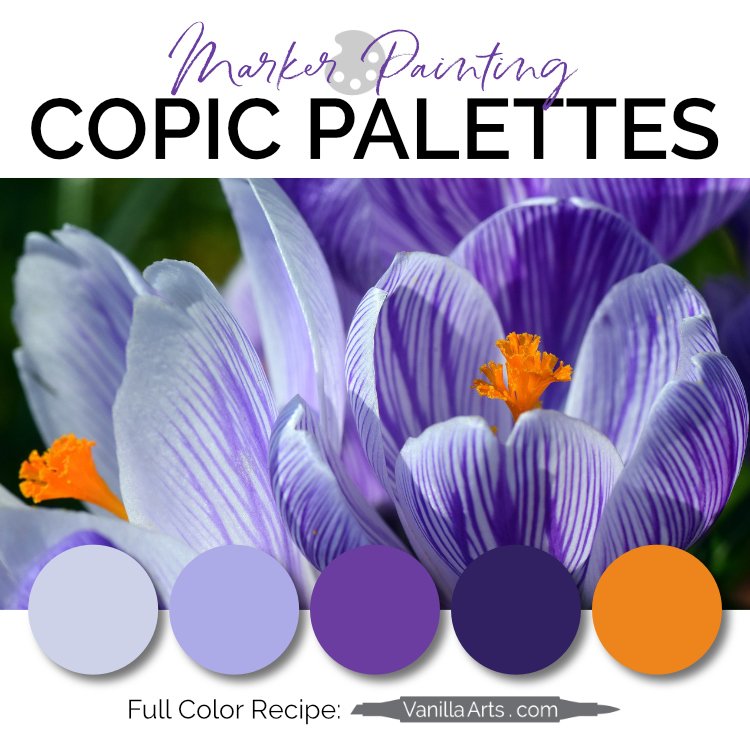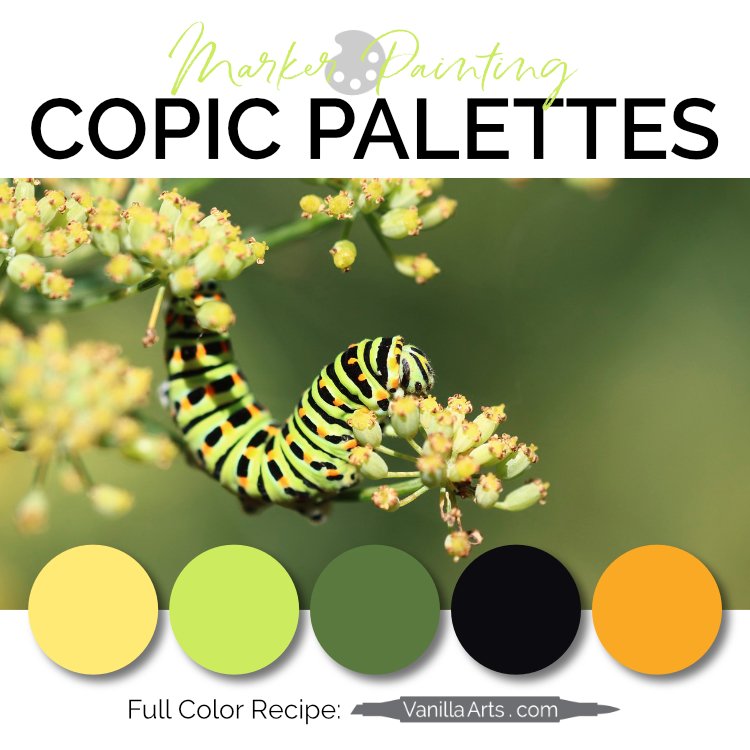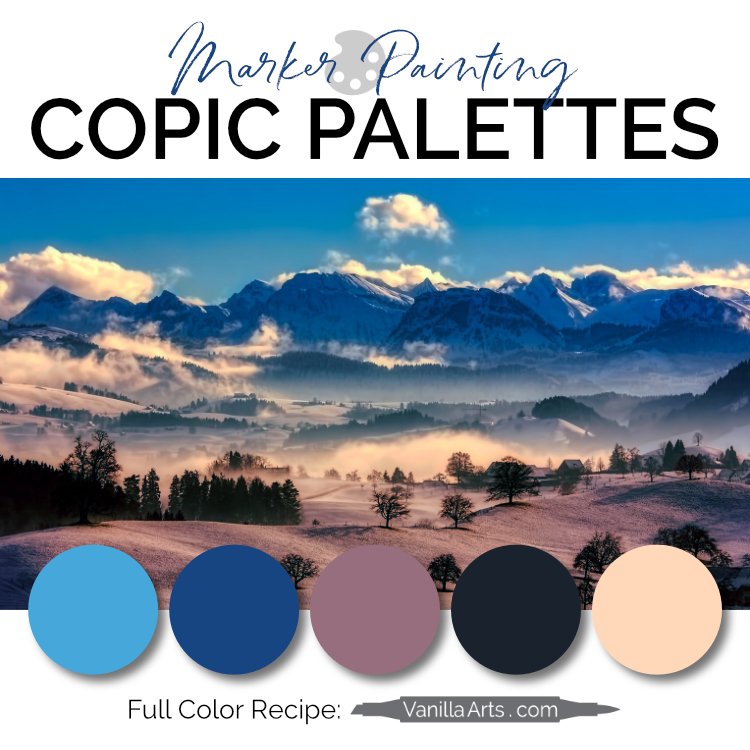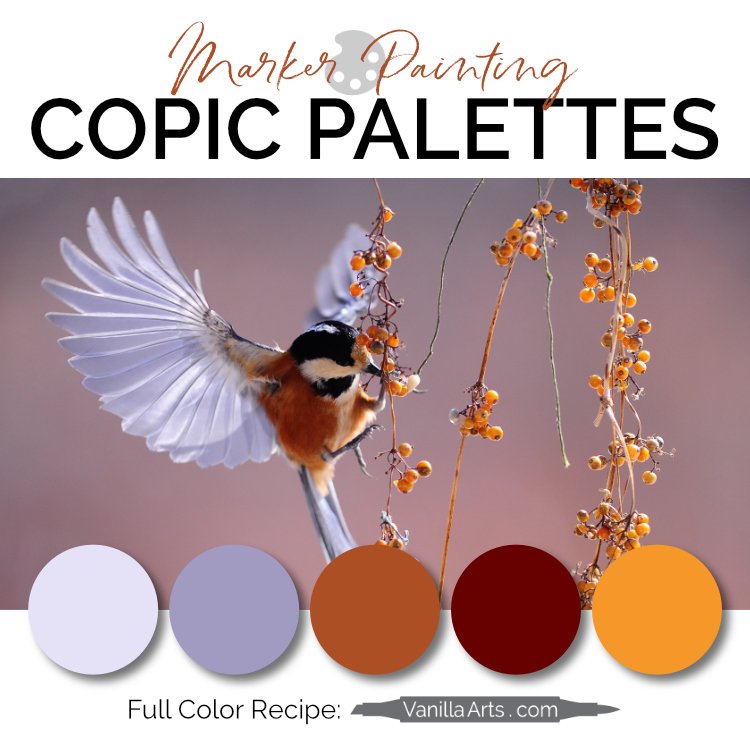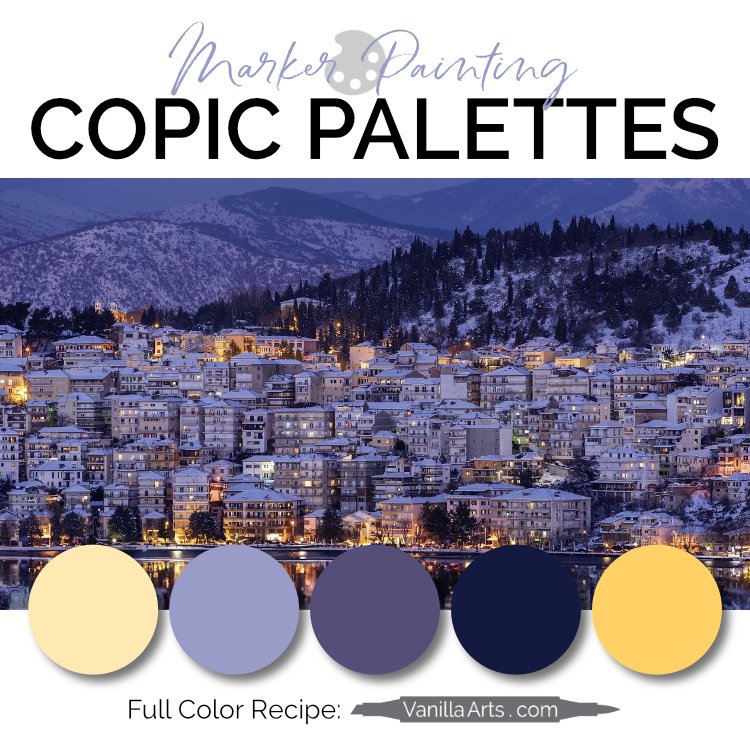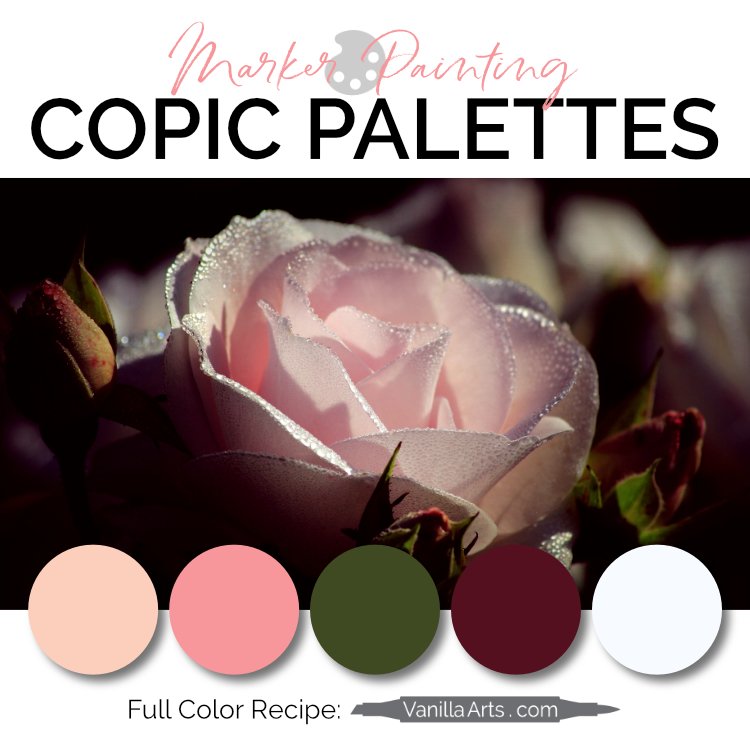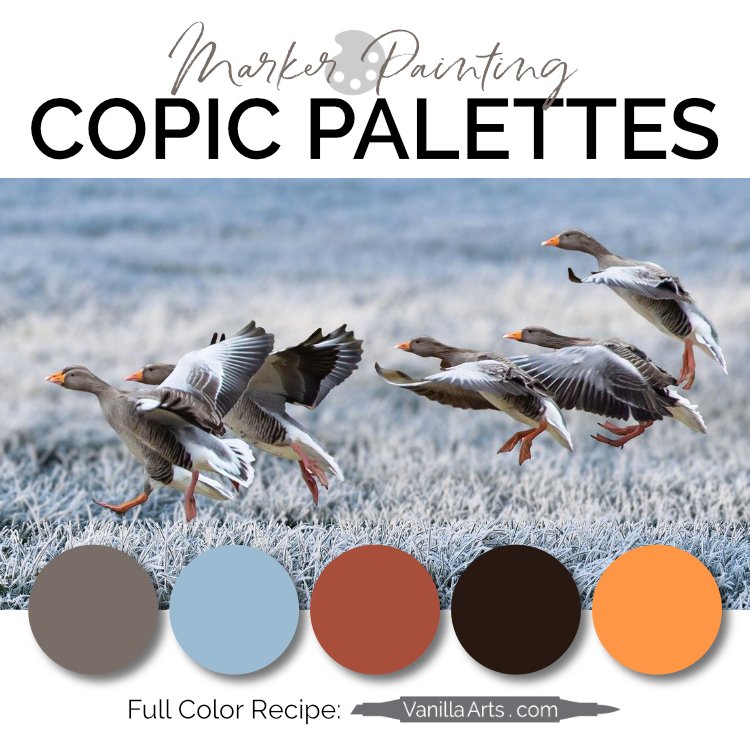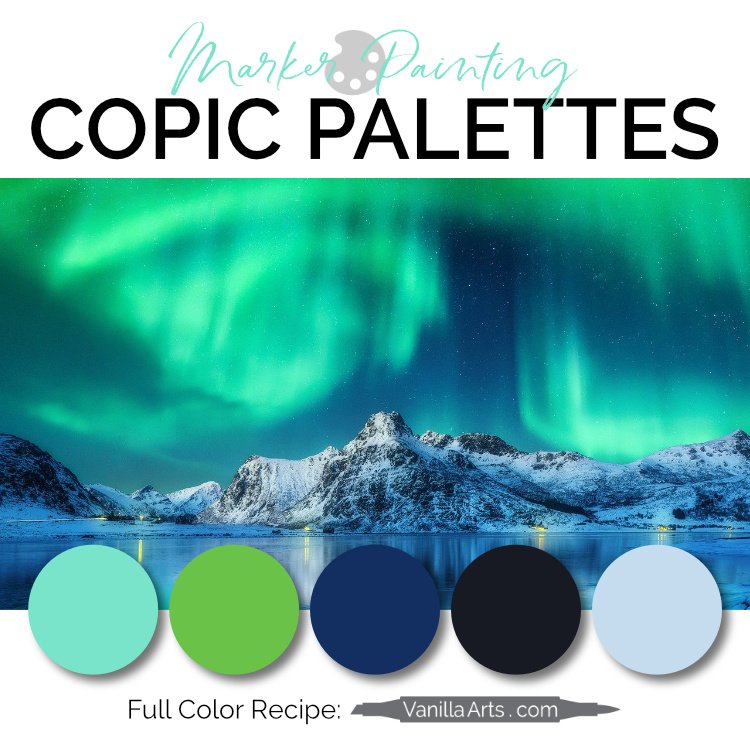Add More Realism to Your Coloring: Use Photo References
If you're not using at least one photo reference...
... with every Copic Marker coloring project, you are making your life harder.
You've got 106 minutes, a full bottle of colorless blender, half a dozen Copics, it's dark out and you're wearing sunglasses... HIT IT!
But whoa! Are you really ready?
Because chances are, you're going to spend the next 10-20 minutes doing one of the following:
Sit and stare at your brand new rubber stamp, completely unsure of where to start, and afraid to make a wrong move.
Start coloring and scrap it at least twice because you don't like the way it's turning out.
I'll bet I know your next move too: Google the stamp's name, desperately looking for a Copic recipe that someone has posted online.
Too many colorers are wasting precious crafting time searching the internet for what to do with their stamp. Sure, stamp tutorials are inspirational but I'll bet your own ideas are just as good or better than much of what you can find online.
The only thing you are missing is a good photo reference.
But wait, I'm not drawing anything! That's why I bought a stamp! Why do I need photo references?
I'm an artist and I have years of training and experience under my belt. Despite all that, I don't color anything without 2-3 references sitting in front of me - even if I'm coloring a commercial stamp!
Why?
Inspiration comes from observation.
The world is far more interesting and detailed than your memory.
So if you're coloring a vanilla ice cream cone, you should either have a real ice cream cone sitting in front of you or a few photos of one. The same holds true if you're coloring two toddlers sitting in a sandbox. Or a lobster. Or the moon.
You need something to look at.
What you observe in a visual reference will vastly improve the quality and artistry of your coloring. No matter what skill level you're at, no matter what the stamped image is.
Photographs are essential.
Three reasons why photo References work:
You can find Milkshake Trio in the Vanilla Stamp Shop. You can grab one image or the whole 2019 Winter Retreat Bundle, including Flamingo Feathers, Milkshake Trio and Yellow Texas Rose.
Photo References Provide Color Palette Inspiration.
Let's say you have a vanilla milkshake as your image. Or maybe a tree; maybe a grizzly bear. A photo of real life items can be the springboard you use to create your own color combinations.
This isn't rocket science! Hold your marker inventory list up to the photo. Color little swatches in the photo margins. Match the markers in your collection to what you see in the photograph. A photo can eliminate hours of online recipe searching.
Look at the whipped cream on top of the milkshake, that's really interesting! And I'll bet you'll find more grey tones in that white whipped cream than one might expect. Show the world what you see.
Ultimately, the colors you find in the photos will lend a unique voice to the image. Don't just follow someone else's milkshake recipe, experiment with your own!
2. Photo References Help You Spot Patterns, Texture & Natural Characteristics.
If I ask you to close your eyes and picture a daisy, what can you tell me about the petal veins?
Now tell me about the pollen disk in the center. Besides being "round and yellow", how would you describe it?
If you're like me, "I don't know" would be the answer to both questions. Photographs can provide the key to a daisy image that looks interesting and highly artistic.
Each daisy petal shown here has two creases running from the attachment point to the tip. I'll bet the stamp artist didn't draw that feature but you can certainly add it now that you've observed it.
The center disk is full of dots, arranged in a rather pleasing and hypnotic concentric pattern. That would be easy to duplicate with pointillism. And look, the edges of the disk are fuzzier than the center. It might be a cool treatment to blend the edges well and leave the dotted texture in the center only.
I got all of that from one daisy photo. Imagine what you can find for your own stamped images!
3. Observing the Real Thing Prevents Inaccuracies and Dumb Mistakes.
I encountered this problem with a Christmas image. It was a reindeer - I think. But then again, it might have been a moose. His antlers were very moose-like. But the more I stared at the stamp, I saw that his nose looked pretty much like my Irish Setter's nose.
So I sat there trying to decide - is this a reindeer, a moose, or a dog who somehow grew antlers? The more I looked, the more confused I became. I even polled my family members. 4-1 they voted for moose despite the name reindeer in the product catalog.
So then I had to figure out how to color the nose of a moosey-reindeer that wouldn't make him look like a dog.
Now, I don't know about you, but when I think reindeer, there's only one nose that pops to mind.
And while I love the little red nosed guy, adding this kind of nose to the image just wasn't possible, nor did I think it was accurate.
So I had to go shopping for moose/reindeer noses. Hello Google, it's me again.
This is the image that I found and used.
I never would have come up with that gorgeous white to black to brown gradiation if it were just up to my feeble brain. My brain was stuck on Irish Setters and wondering why I'd never noticed as a kid that Santa was a jerk to any elf, toy, or reindeer with a birth defect.
Want to see a dumb mistake that made it into movie theaters and onto national television?
This drives me nuts whenever I see it. And it all could have been avoided if anyone on the animation or production staff had bothered to consult a book or photograph.
That's a male cow. With udders.
Yeah, oops is right.
It happens to the best of us. Two years ago on a freelance job, I drew an elephant diagram for a 5th grade biology class worksheet and test. I had the tusks coming out of his cheeks and I felt rather stupid when the client had to correct me.
A friend had a floral illustration printed in a national magazine that garnered a lot of reader mail because she drew the wrong leaves for the flower species.
As a colorer, taking a little time to consult a search engine's image collection can help stop you from coloring a mushroom green or a One Way sign yellow. Without some guidance, you might not think twice about using C1 to C5 markers to color a gray squirrel until someone points out that gray squirrels are actually kinda brown.
Sure, you can always claim artistic license as the reason you colored a goldfish blue. In fact, I think the Back to the Barnyard artists drew the bull udders for laughs. But no one was laughing after the 90,000th email. The artistic license excuse only goes so far and has almost become code for "yeah, I screwed up but I'm not going to admit it".
How to find good reference images
I used to clip magazine photographs. I had an entire 3 drawer filing cabinet full of folders of interesting photography samples from ads, books, and flyers from my junk mail. It was a pain in the rear to keep organized and I always had a stack of stuff to be filed.
The internet allowed me to recycle all that paper!
To perform your own image search, open up your web browser:
Type into search "goldfish" or "polar bear" or "amanita muscaria". Don't use the quote marks, just type the name of what you're about to color. You can also type it directly into the address bar.
When the results pop up, hit the tab marked "Images" to get just the photographs or illustrations.
Click on any image to bring up a larger version. You can usually print that directly by right-clicking with your mouse. To save paper & ink, I save the photo file to Evernote and view it from my laptop or iPad screen as I color.
The quality of some images in your search will be better than others. Search results vary each time you query something. It all depends upon what photos people have uploaded to websites around the internet (and how they tagged them). You'll always get a few oddball images that have nothing to do with what you wanted.
"Amaninta Muscaria" obviously brings up more specific images than "cool red mushrooms" because search engines reward specificity. But the only way I learned about "amanita muscaria" was by first searching "red mushrooms" which showed me the correct latin name. Then I did a second search using the more official species name for some kick butt images that make me want to draw and color mushrooms today.
Photo references are easy to add to your crafting routine.
They're the secret ingredient to beautiful stamped images. Your coloring will improve as you practice your powers of observation, and you'll be adding your own unique flavor to everything you make. It's a win-win-win-win!

